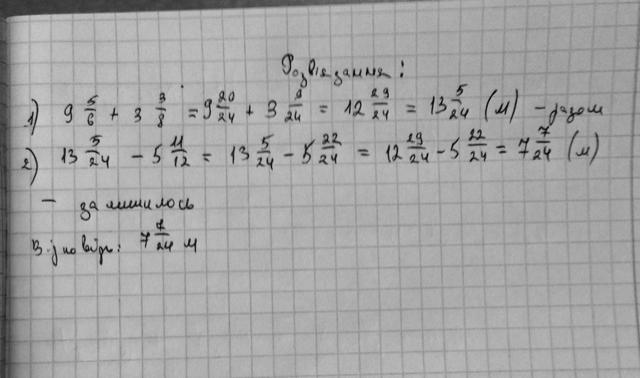Предмет: Математика,
автор: Pomogi568
В амбаре было 9 5/6 m зерна.В амбар привезли 3 3/8 m, а увезли 5 11/12 m зерна.Сколько тон зерна осталось в амбаре?
Ответы
Автор ответа:
7
Вот держи)
Удачи тебе в учёбе :)
Удачи тебе в учёбе :)
Приложения:

Похожие вопросы
Предмет: Геометрия,
автор: Arahma
Предмет: Физика,
автор: nastyattt67t
Предмет: Английский язык,
автор: karo0611
Предмет: Химия,
автор: НикНэйм2011
Предмет: Математика,
автор: Alekseikolesni1